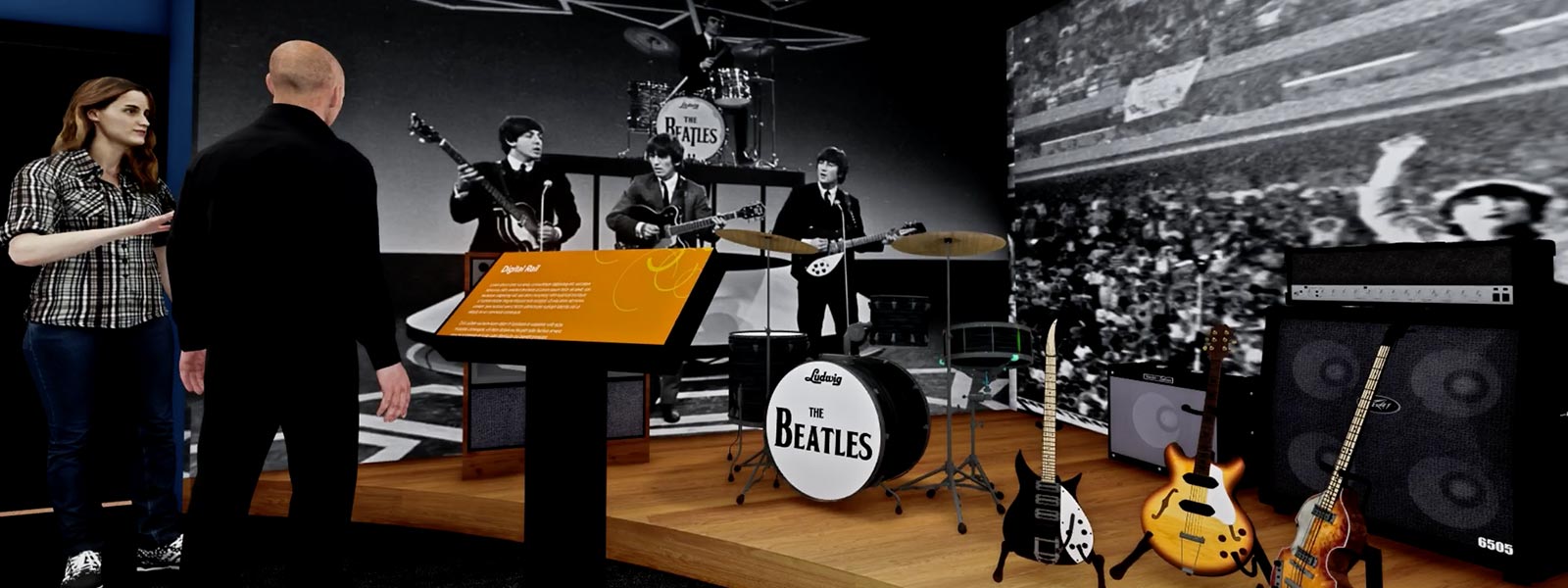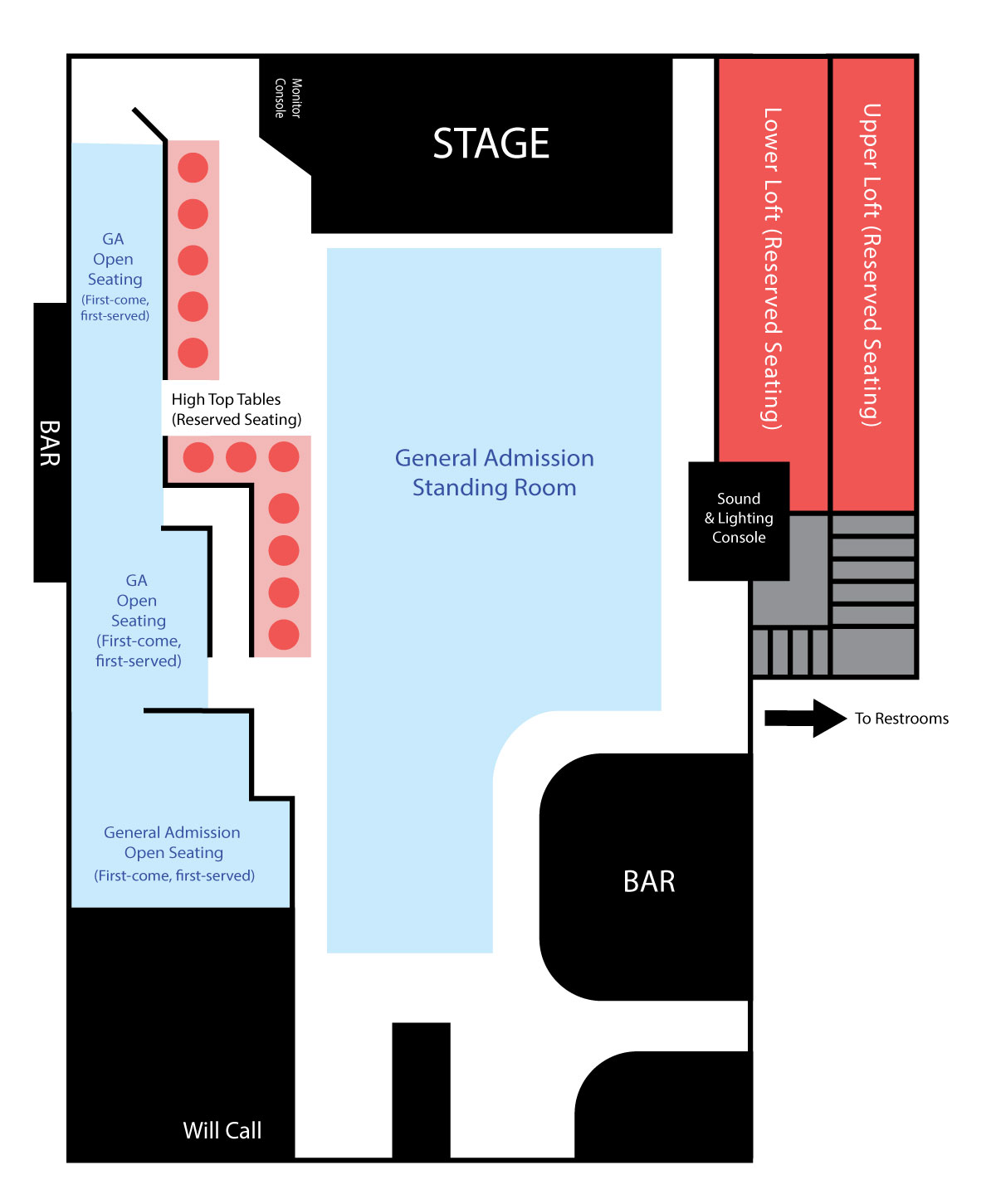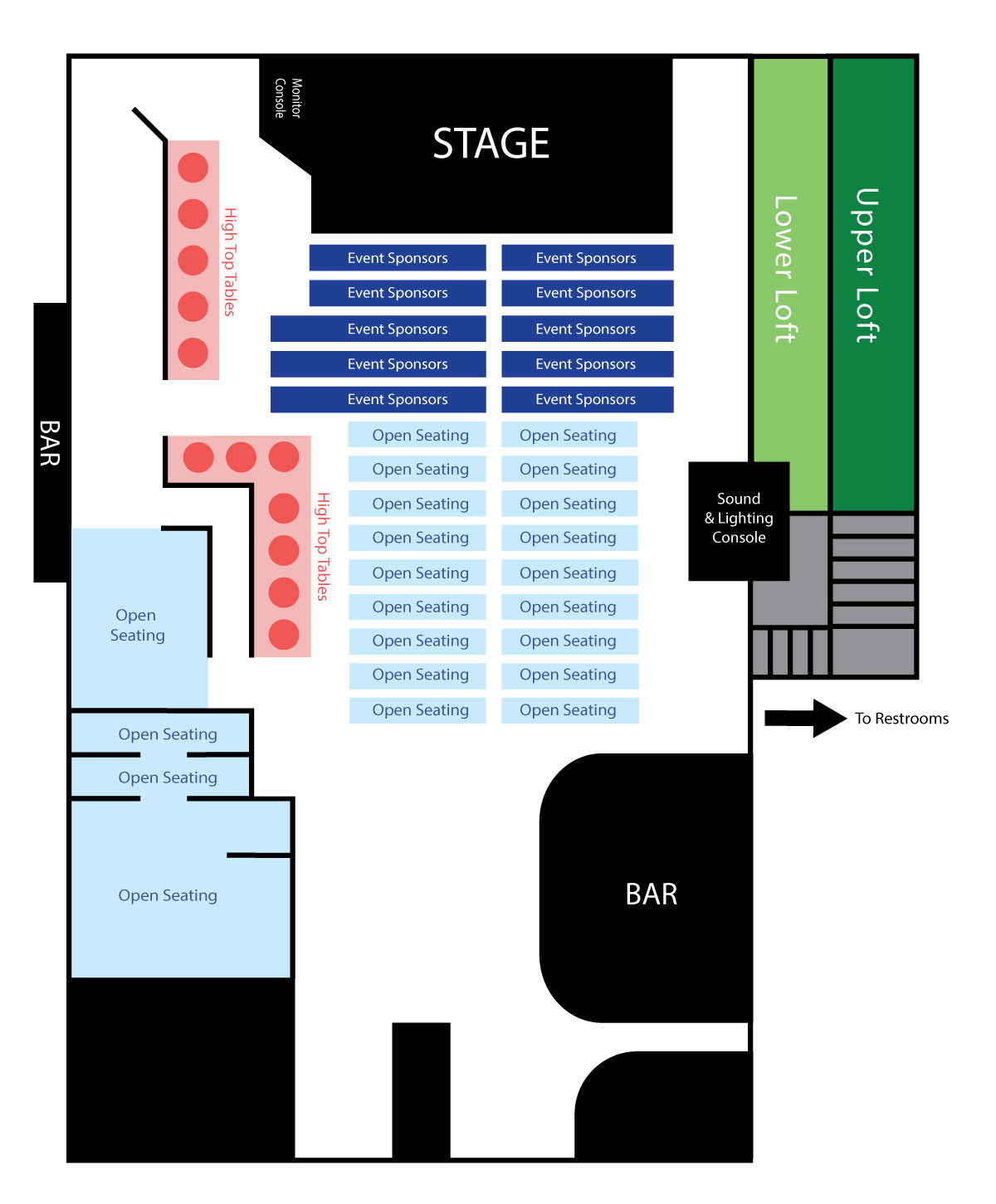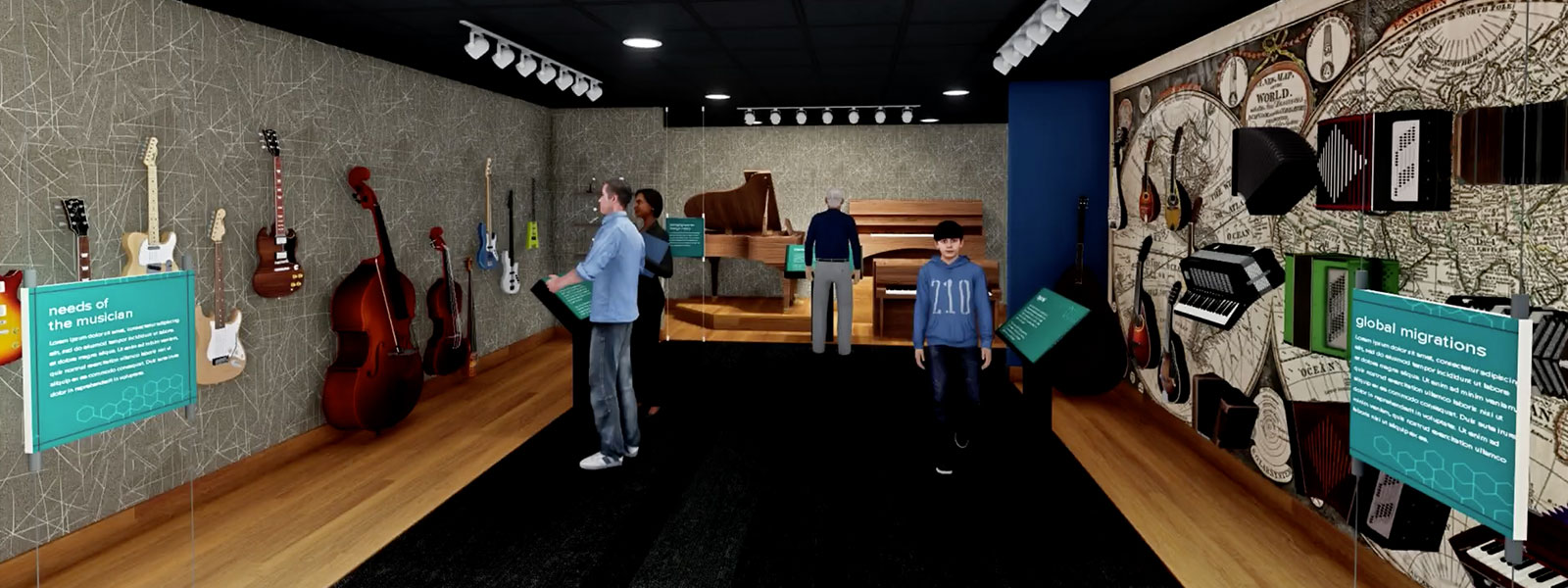
A New Way to Tell Our Story
Currently, when visitors tour the Museum, they find the galleries organized chronologically, starting in the 1890s and proceeding to the 1990s. Originally, this chronological structure was the most effective way to tell the story of NAMM’s century of service; it was also comfortably familiar for most visitors. Furthermore, the three original subthemes of the galleries—Popular Music, Retail, and Innovations—fit well into the chronological approach and provided a useful roadmap for visitors as they made their way through the galleries and through time.
However, more than 20 years have passed since this original vision became a reality. And 20 years is a long time, especially in the world of museum exhibitions. Those years have brought enormous changes in society, in technology, and, by extension, in the industries involved with musical products. We became increasingly aware that the time had come to update and refresh the exhibition storyline.
So we went back to the very beginning of the exhibition development process and asked ourselves: What exactly is the purpose of our museum in this evolving world? How can we best serve today’s visitors? How can we inform and engage them through our unique story? And how can we do our part to change the lives of our visitors for the better?
It was a long and seemingly endless question-and-answer process. Supplying the world with musical instruments and products is a complex and multi-faceted process! Ultimately, however, we found that despite this complexity, the storyline could be organized into three quite simple components. Making the instruments (from the one-person shop to the global manufacturer) and providing the instruments (from trading posts of the 1800s to today’s ecommerce platforms) are the two principle components of the industry itself. The third component, using the instruments, is the result of the industry’s work. And what a splendid result it is!
Making, providing, using—the three components at the core of the music products industry. Think of it as an ecosystem: interrelated and interdependent. And now in the renovated galleries, these three components—themes, really—will become the portals through which we tell the story of music making.
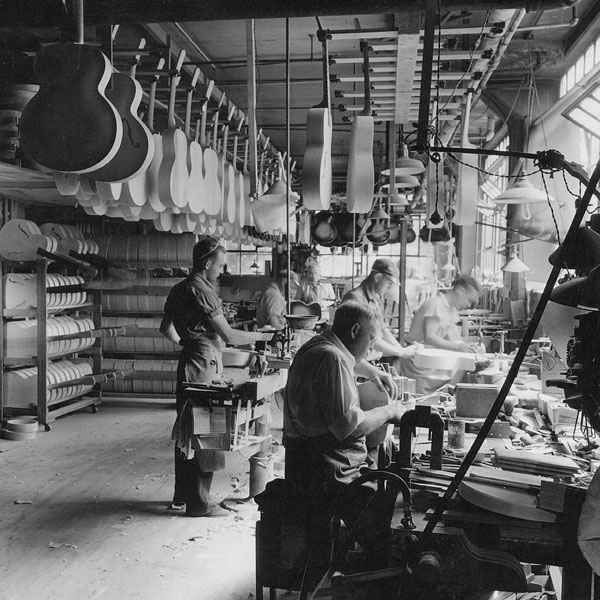
The first gallery starts the visitor off with the instruments themselves. How are instruments made? Do they change through time, and if so, how? What drives that change? How does it affect the music we hear or play? What is the impact of technology, economic and social trends, popular culture, musicians’ needs, and global migrations on the design and production of instruments? These are just some of the questions addressed as we look at the how and why of instrument making—and some of the people behind-the-scenes making it all happen.
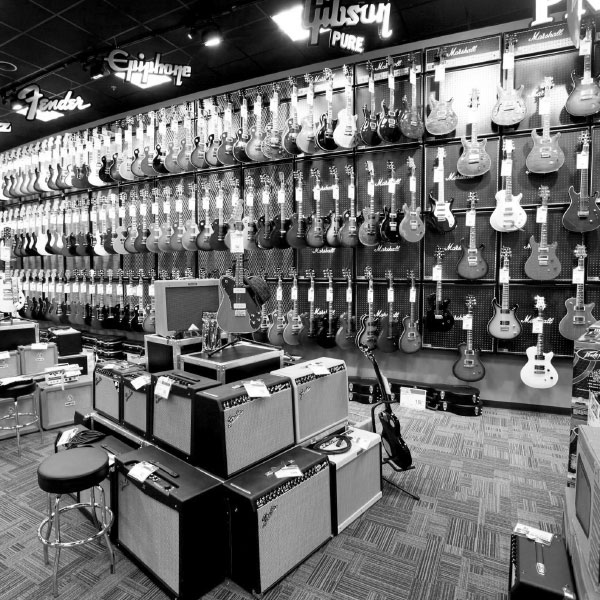
Once visitors have learned about instrument making, they proceed to the second gallery where they will explore the ever-shifting economic and social landscape and its impact on the musical instrument marketplace. How has our access to instruments changed? Before trains, planes, and container ships, how were instruments delivered? When did the concept of “shopping” arise? How do we adapt to virtual stores and online shopping? Not often explored in a museum setting, these questions lead us to inspiring stories of entrepreneurship, perseverance, and creativity in the retailing, distribution, and marketing segments of the music products industry.
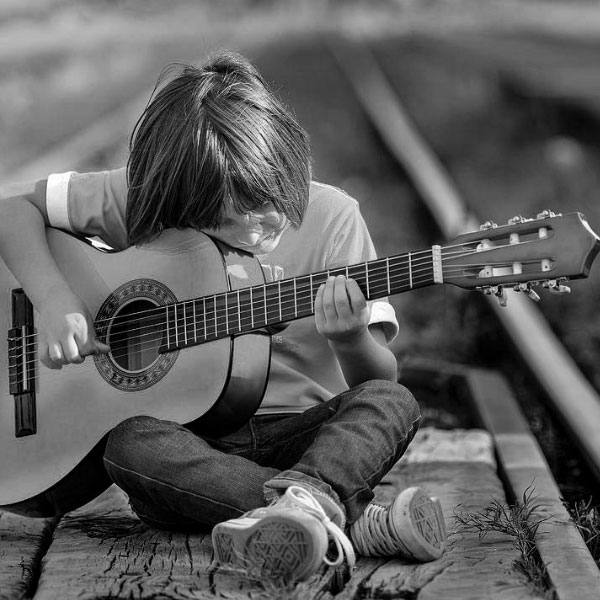
Leaving the second gallery, visitors move to the third and final exhibition gallery where they will explore and reflect upon the impact of music on their own lives. Remembering the first live musical performance you attended, or an instrument you once played (and maybe still play), or a song that has a special meaning to you… What moments in musical history have made a lasting impact on you? How has music enriched your own life? This gallery is where inspiration truly takes flight.
Three major themes…now means three major galleries, instead of the five you currently find in the Museum. And although the galleries are undergoing major changes, important elements from the current displays are being kept. Adapted and updated. For example, woven throughout the galleries—indeed, an essential element in each—is the display of the Museum’s wonderful collection of instruments. And in some places, we still use a chronological narrative to tell unique stories and illuminate certain themes. In other words, we’ve tried to keep the best of the old and integrate it into the best of the new.
Ultimately, the revised thematic organization is not only designed to tell the story of the music products industry in a new and compelling way; it’s also designed to inspire visitors to make their own personal connections to the music in their lives.
